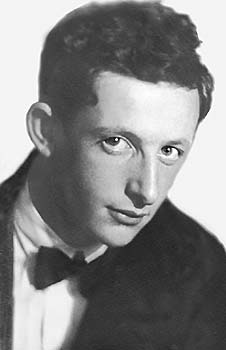Yuli Borisovich Khariton (1904-1996) was a leading scientist on the Soviet atomic bomb program. He is often called the “father of the Soviet atomic bomb.”
Early Years
Born into St. Petersburg’s Jewish intellectual aristocracy, Khariton graduated from the Leningrad Polytechnical Institute in 1925, where he worked under the guidance of Abram Ioffe, Director of the Institute’s Chemical Physics Department. He then attended the University of Cambridge, where he earned a Ph.D in physics in 1928 and studied under Ernest Rutherford, the “father of nuclear physics,” at the University’s Cavendish Laboratory.
Upon returning to the Soviet Union, Khariton focused his research on explosives. In 1931, he founded and directed the Institute of Chemical Physics’ Laboratory of Explosives. During this time, he worked towards another doctorate in physical and mathematical sciences, which he received in 1935.
During World War II, Khariton developed munitions for the Soviet Army and contributed to the USSR’s preliminary atomic research efforts.
Soviet Bomb Project
Following the bombings of Hiroshima and Nagasaki, Stalin accelerated the Soviet bomb project, calling for an all-out crash program in atomic research and development. In 1946 Khariton was appointed by Igor Kurchatov, director of the Soviet project, as the program’s lead scientist. He was tasked with directing atomic research, development, design, and weapons assembly.
Khariton helped select and establish the site of the secret Soviet nuclear weapons facility, known as Arzamas-16 and nicknamed “Los Arzamas.” Located 250 miles east of Moscow, Arzamas-16 was formerly a monastery. When Khariton and his team relocated to the site in 1946, many of the monastery’s churches and living quarters were still standing and initially served as the first atomic laboratories until prisoners from a nearby labor camp developed the site and built new research facilities and houses. There, Dr. Khariton served as the lead scientist for forty-six years until he retired in 1992 at the age of eighty-eight.
Khariton and his colleagues designed the first Soviet atomic bomb, detonated on August 29, 1949, based in part on blueprints of the “Fat Man” bomb collected by physicist Klaus Fuchs, a Soviet spy on the Manhattan Project. Khariton also contributed to the Soviet thermonuclear program.
Later Years
After the collapse of the Soviet Union, Arzamas-16 became the All-Russian Scientific Research Institute of Experimental Physics, and the town was renamed Sarov. Khariton continued to oversee scientific research and development at the Institute.
Khariton became a member of the Soviet Academy of Sciences in 1953 and was a three-time winner of the title “Hero of Socialist Labor,” the Soviet Union’s highest civilian award. He was also a recipient of the Order of Lenin and received the Lenin Prize in 1956. While much of his life is still shrouded in mystery, Khariton published a revealing article in the Bulletin of the Atomic Scientists in 1993 describing his work on the Soviet bomb project.
Dr. Khariton died on December 19, 1996 at the age of ninety-two in Sarov. He was the last to die of the Soviet physicists who worked on the first Russian bomb, and was also among the last living pupils of Ernest Rutherford.
In honor of the centennial of his birthday, his image appeared on a Russian stamp.





